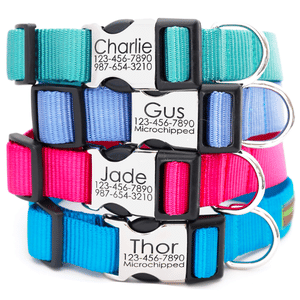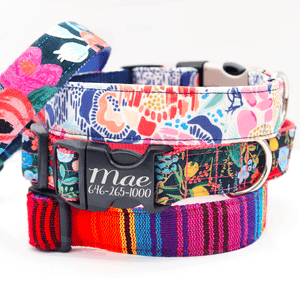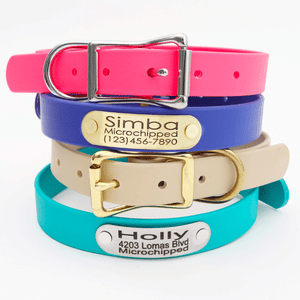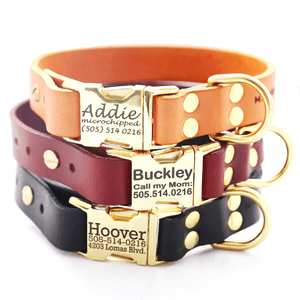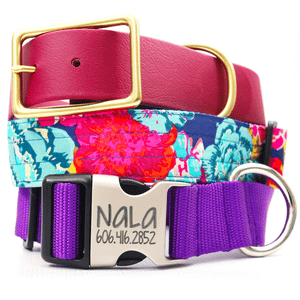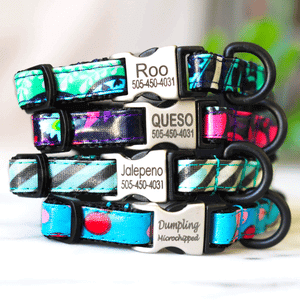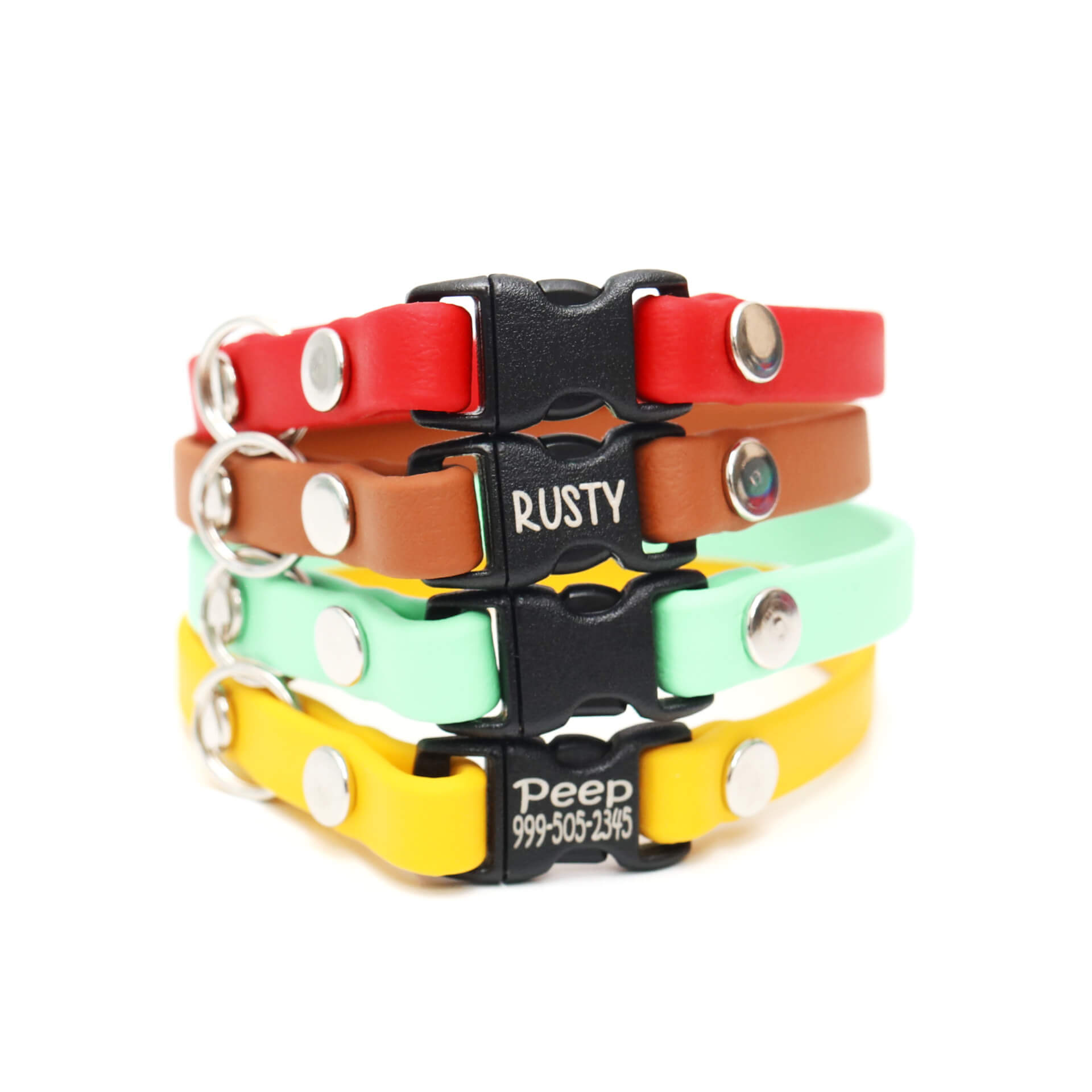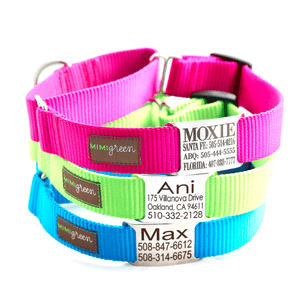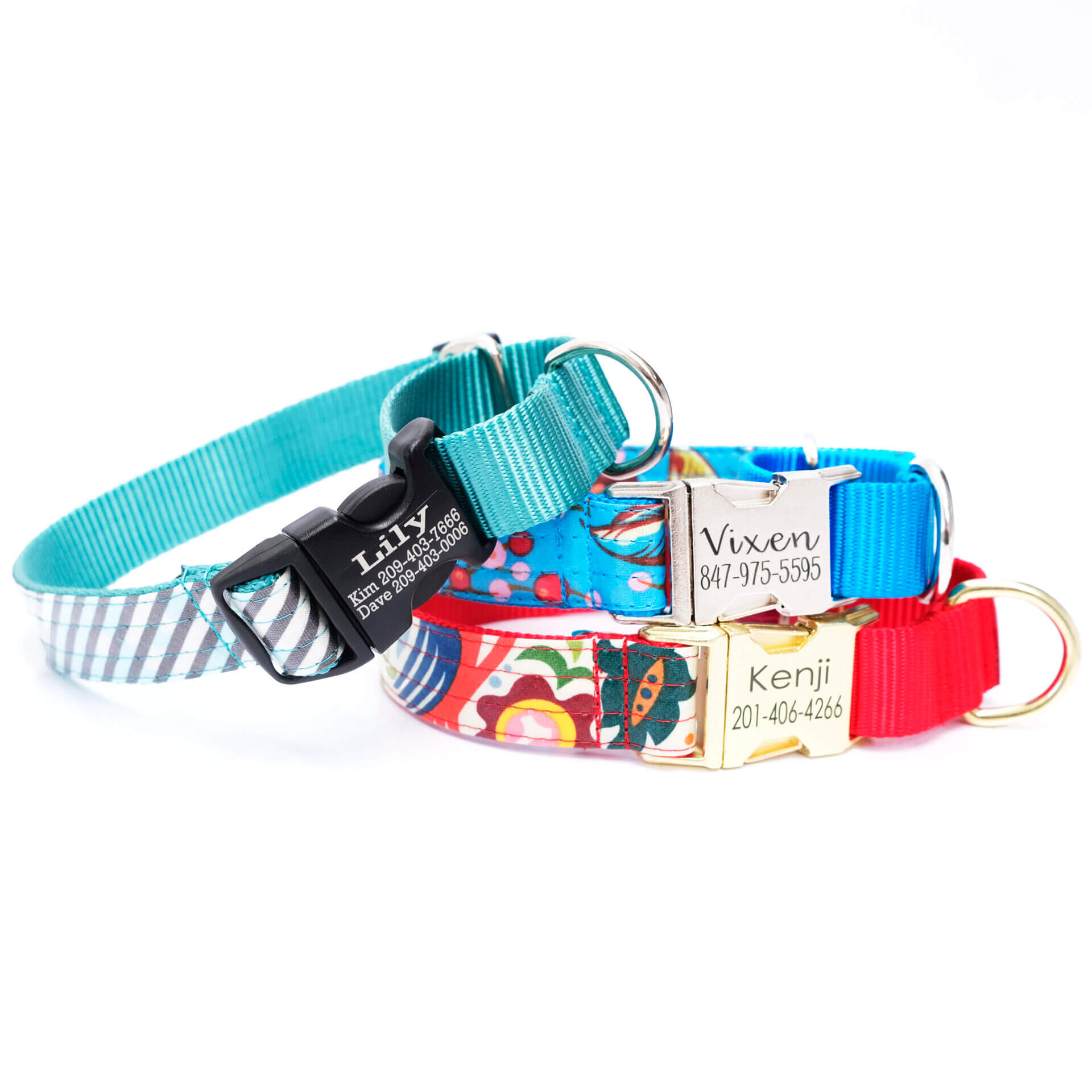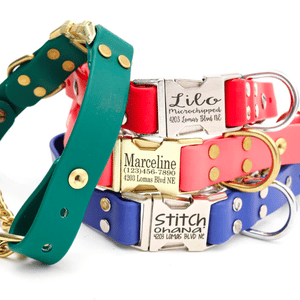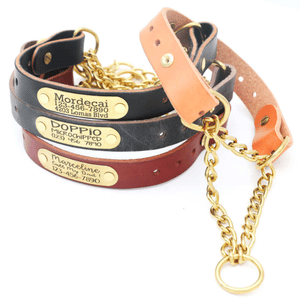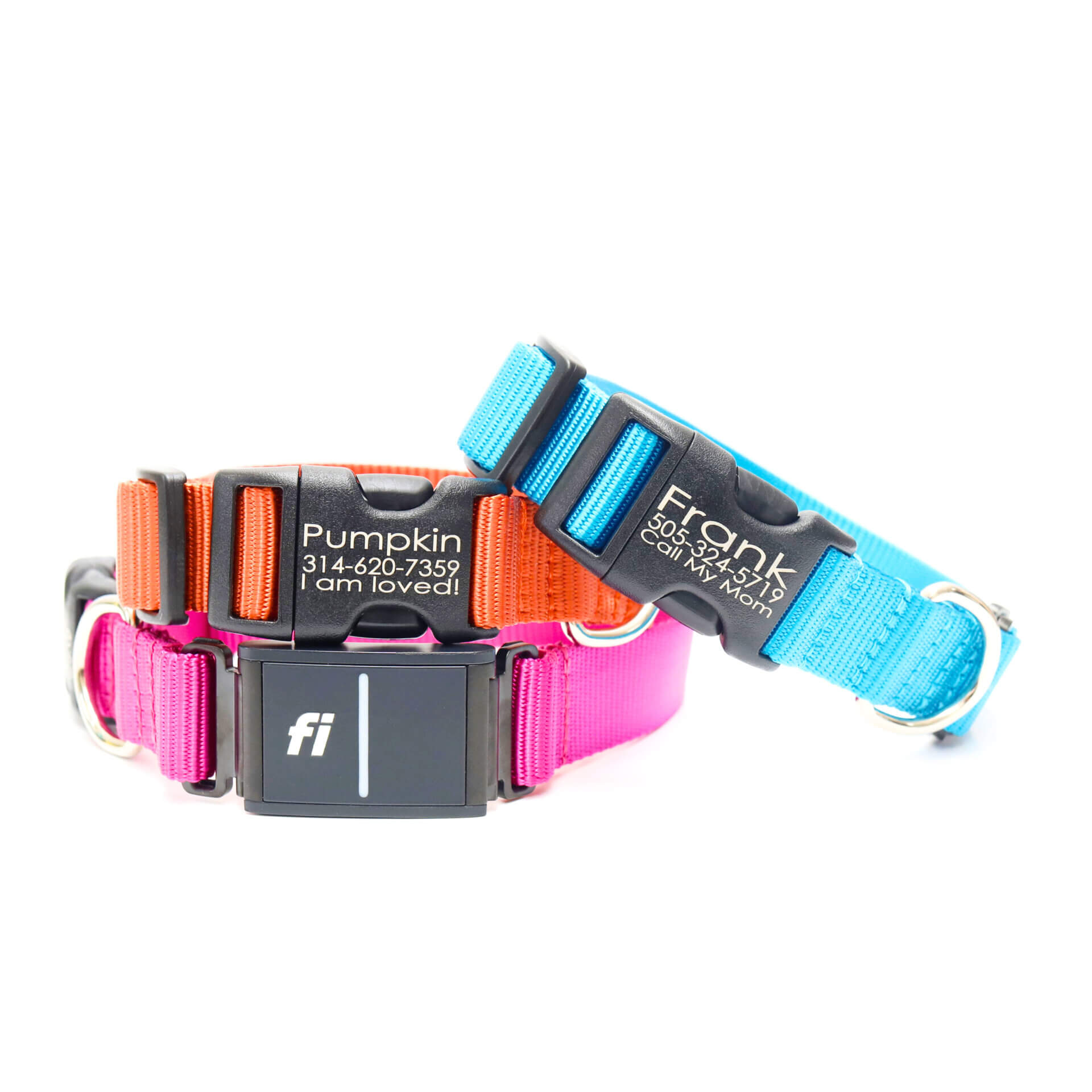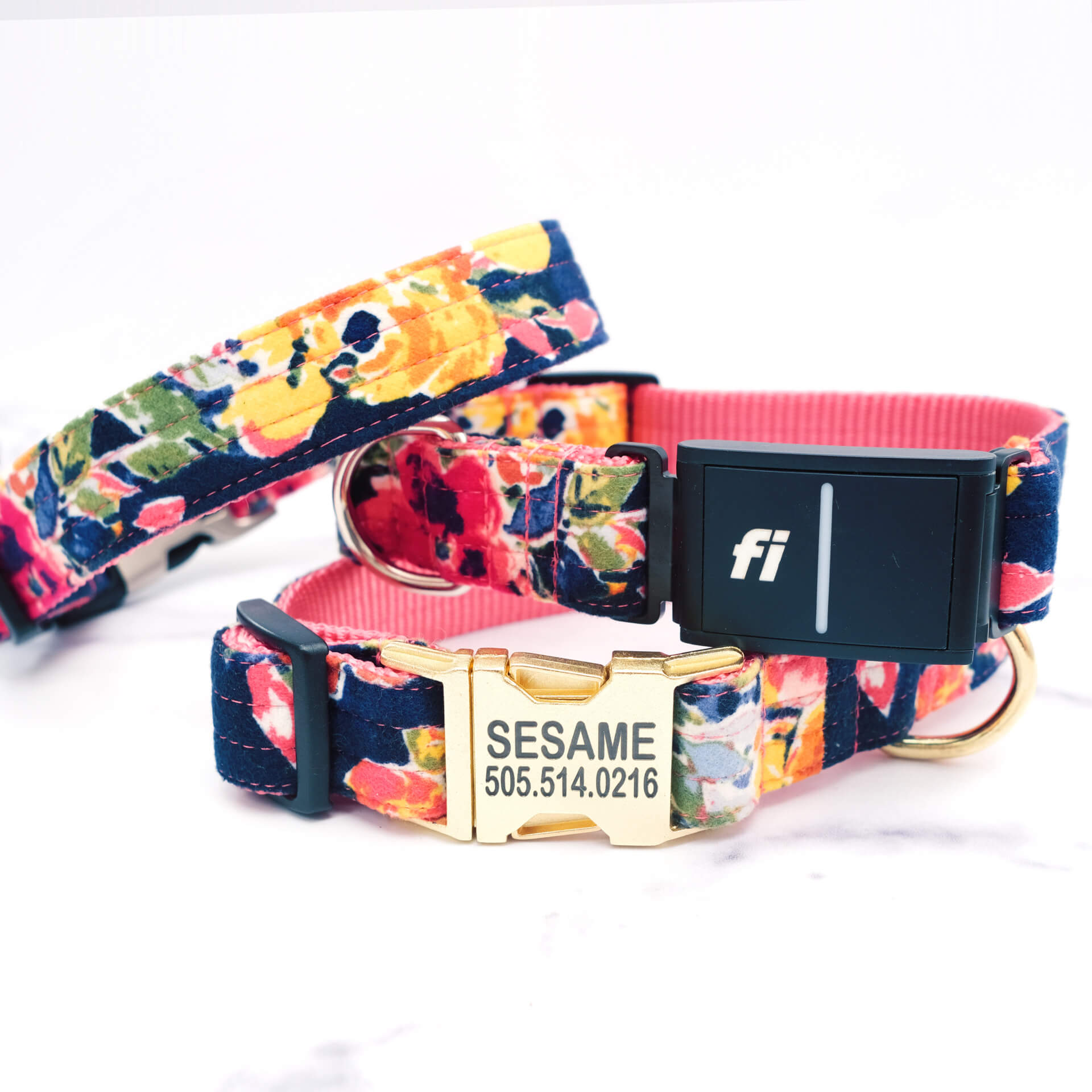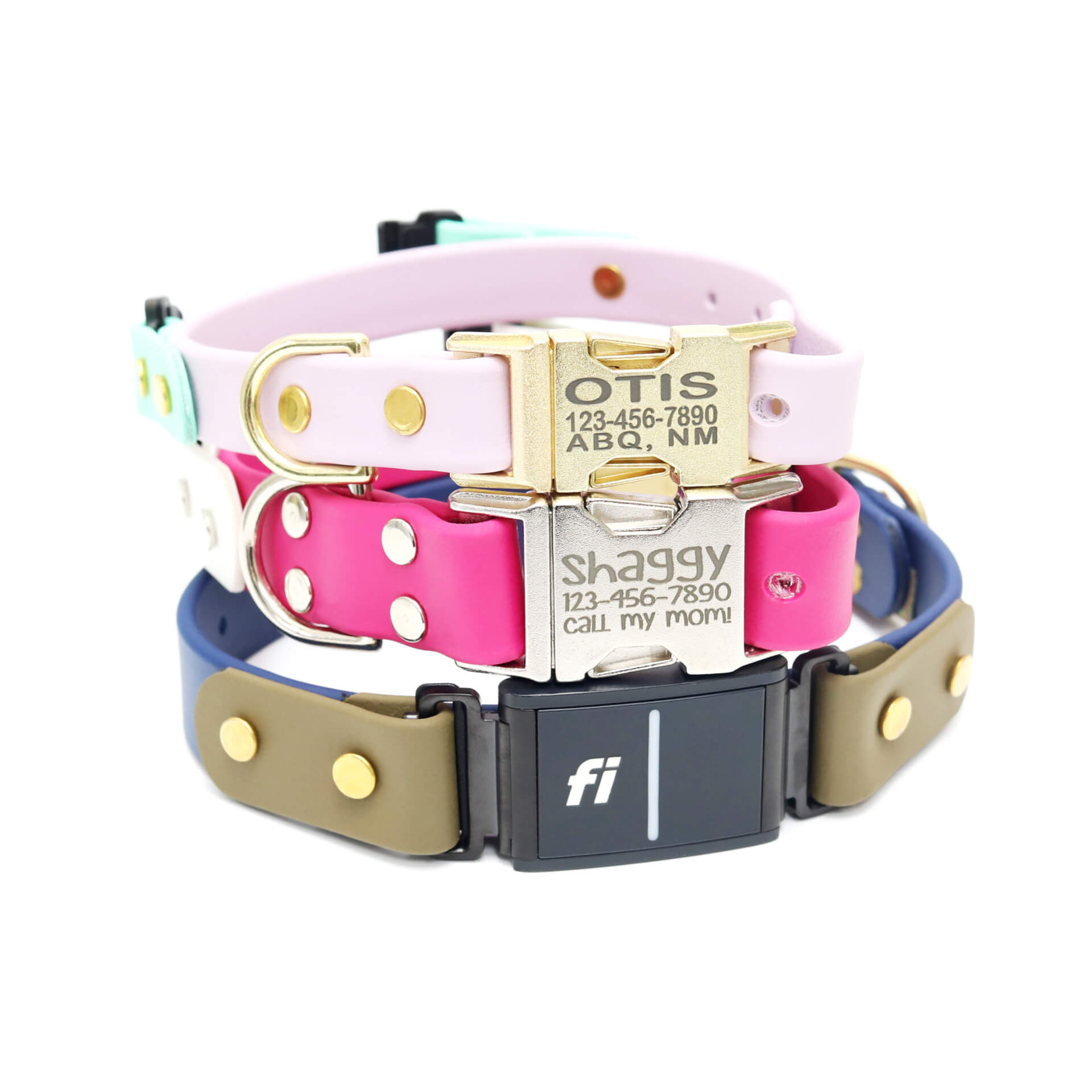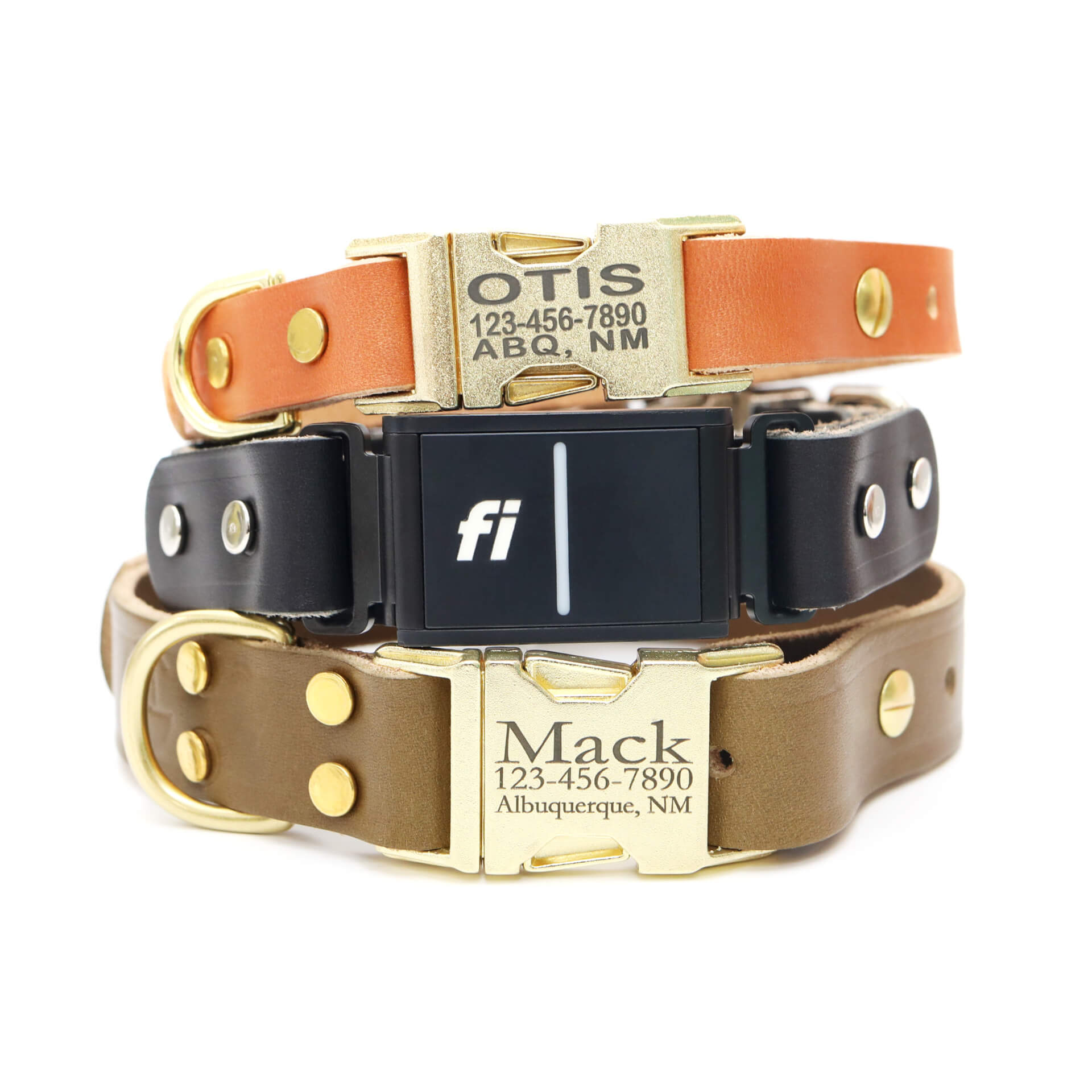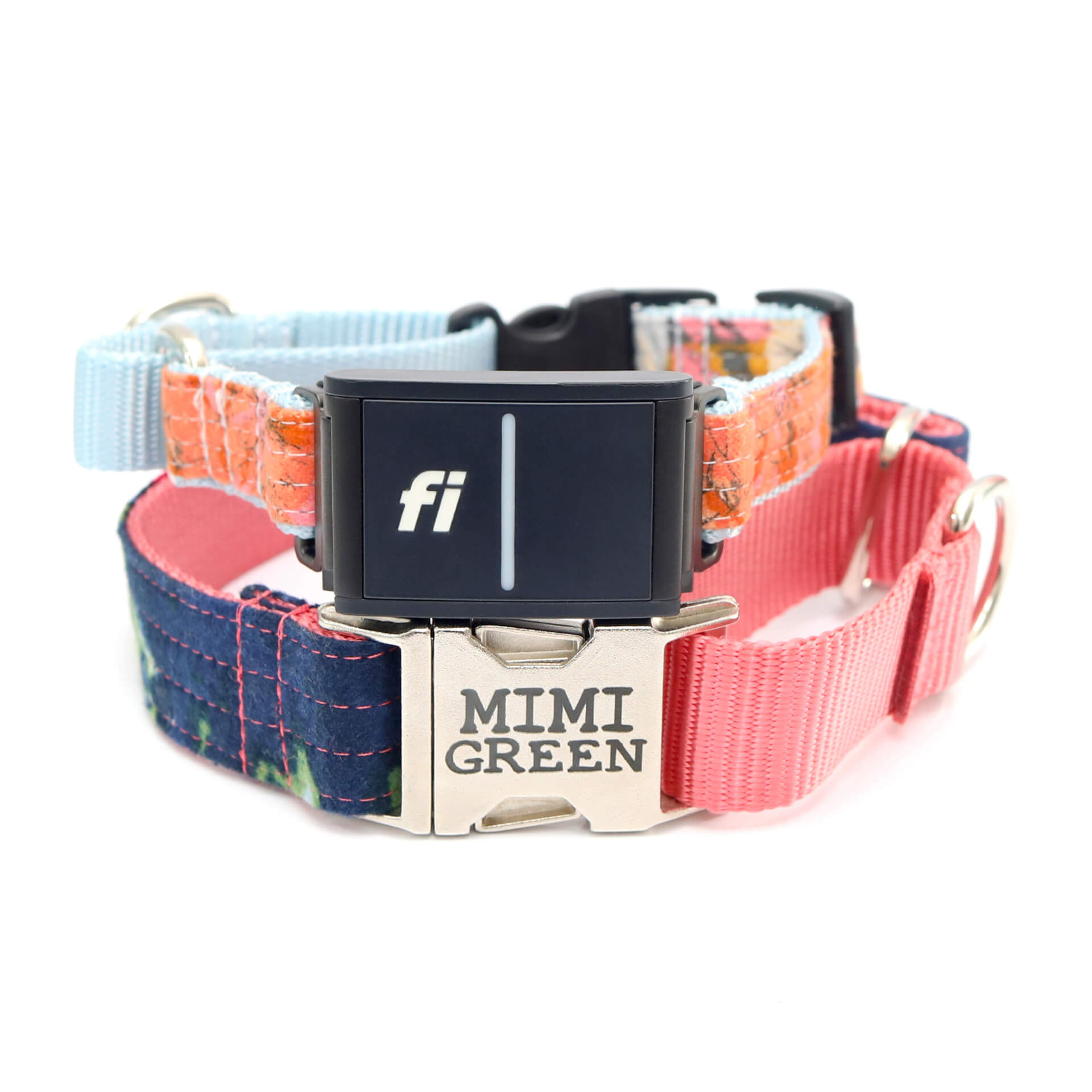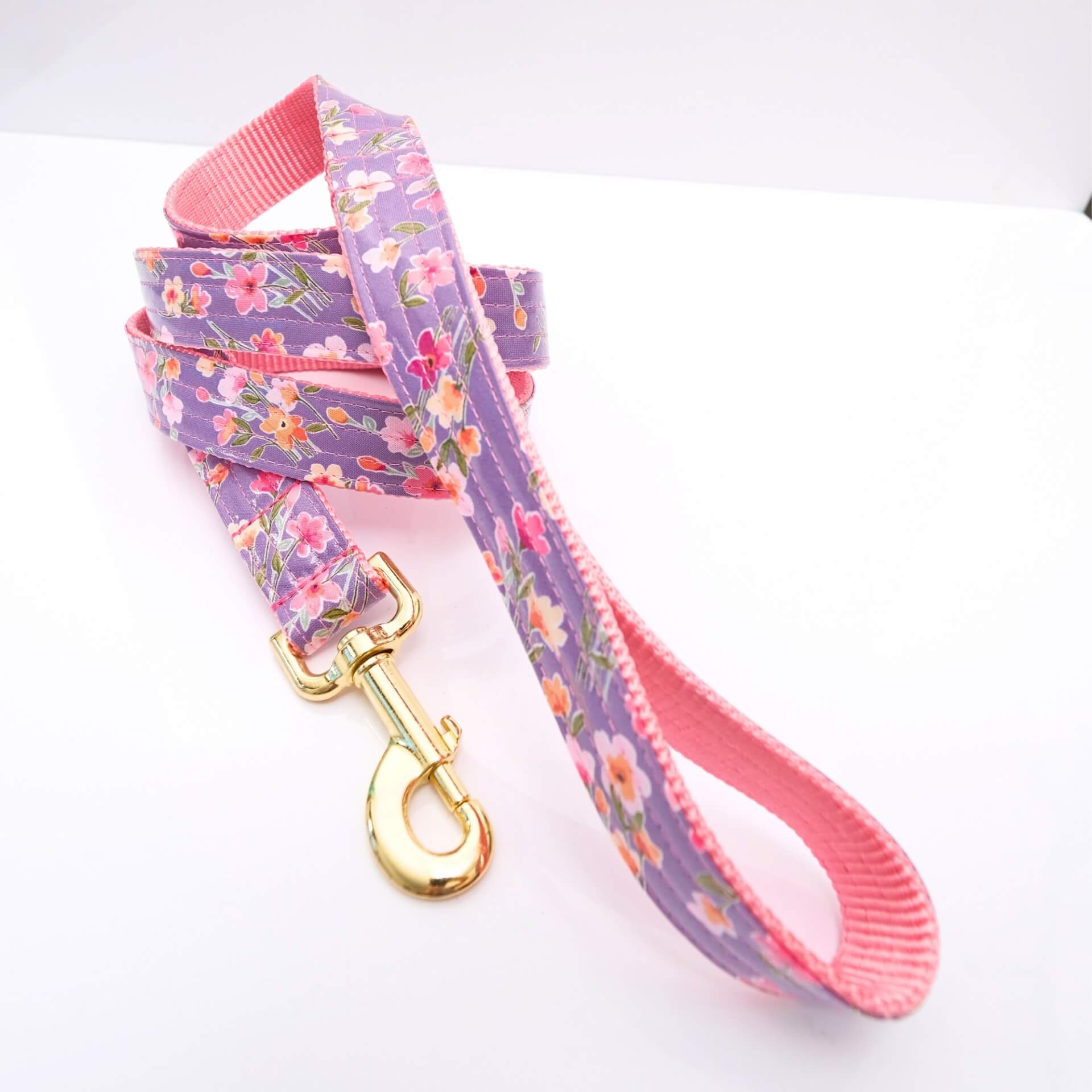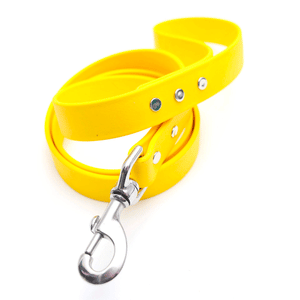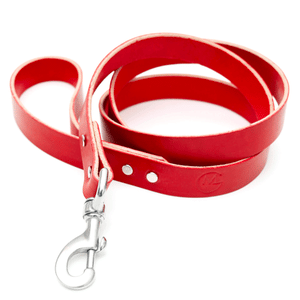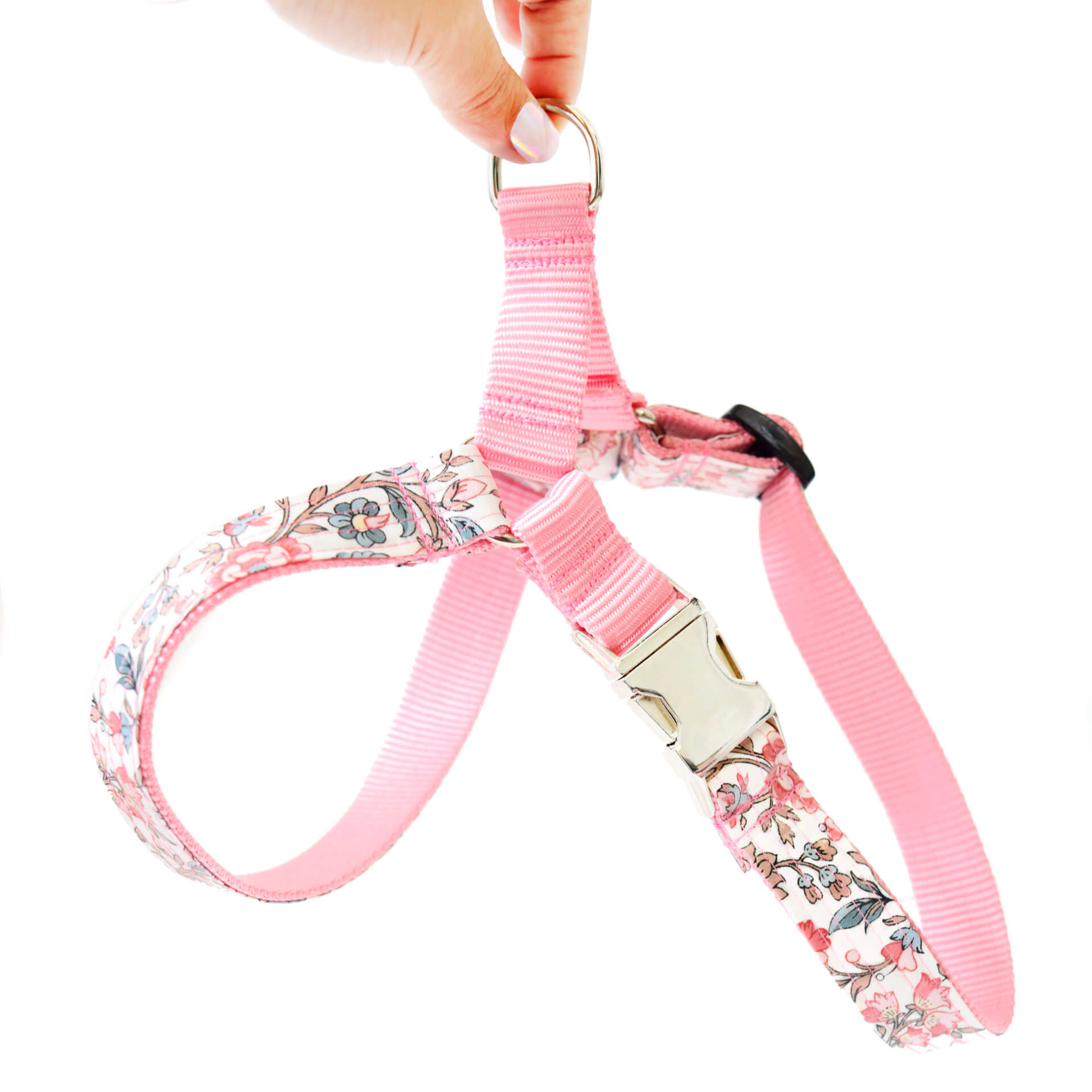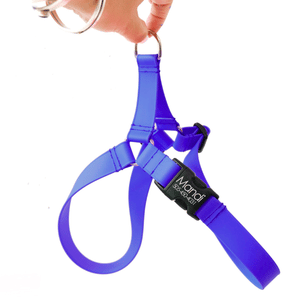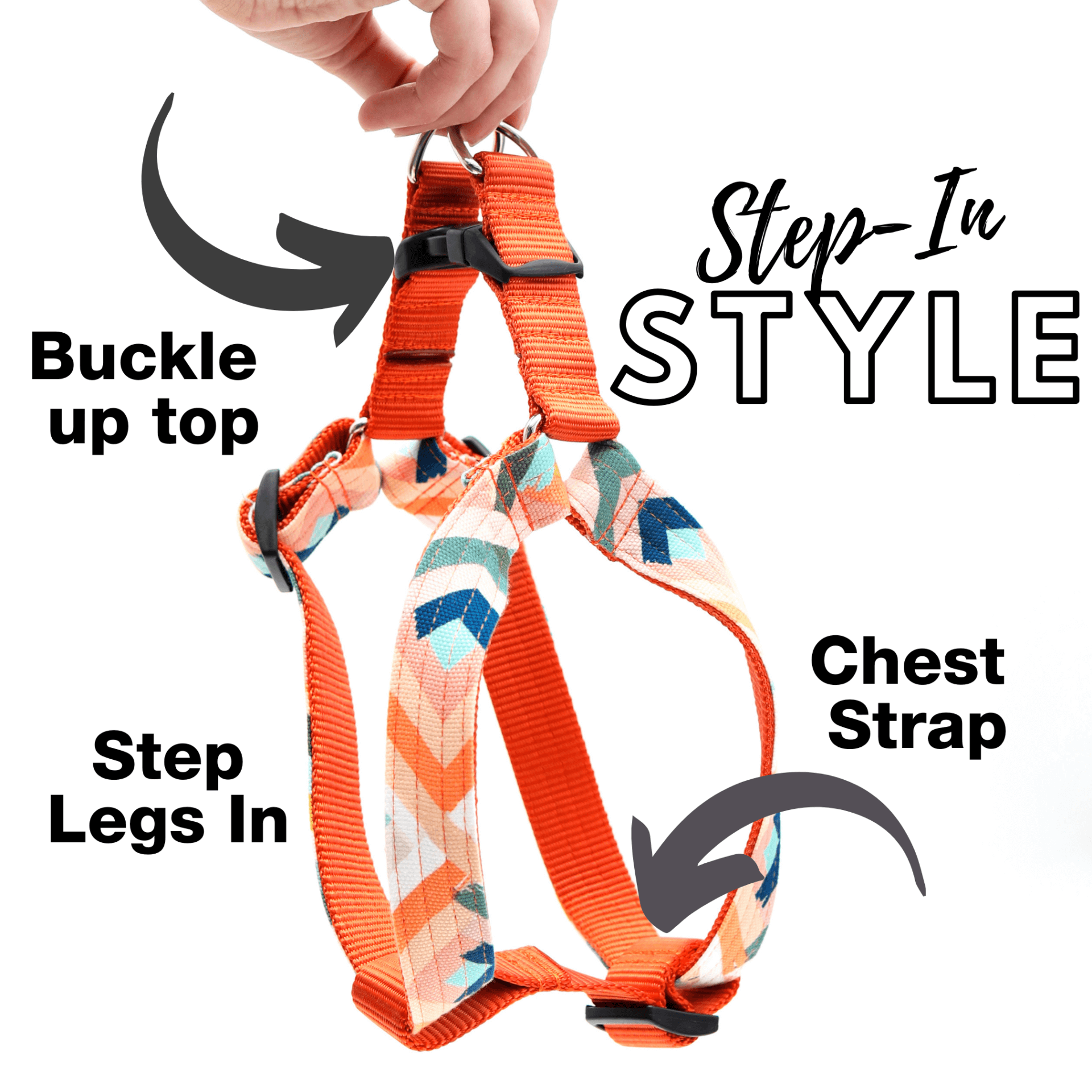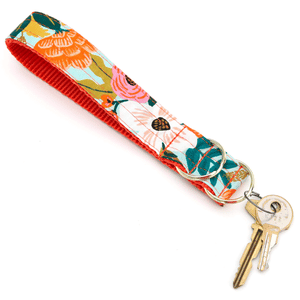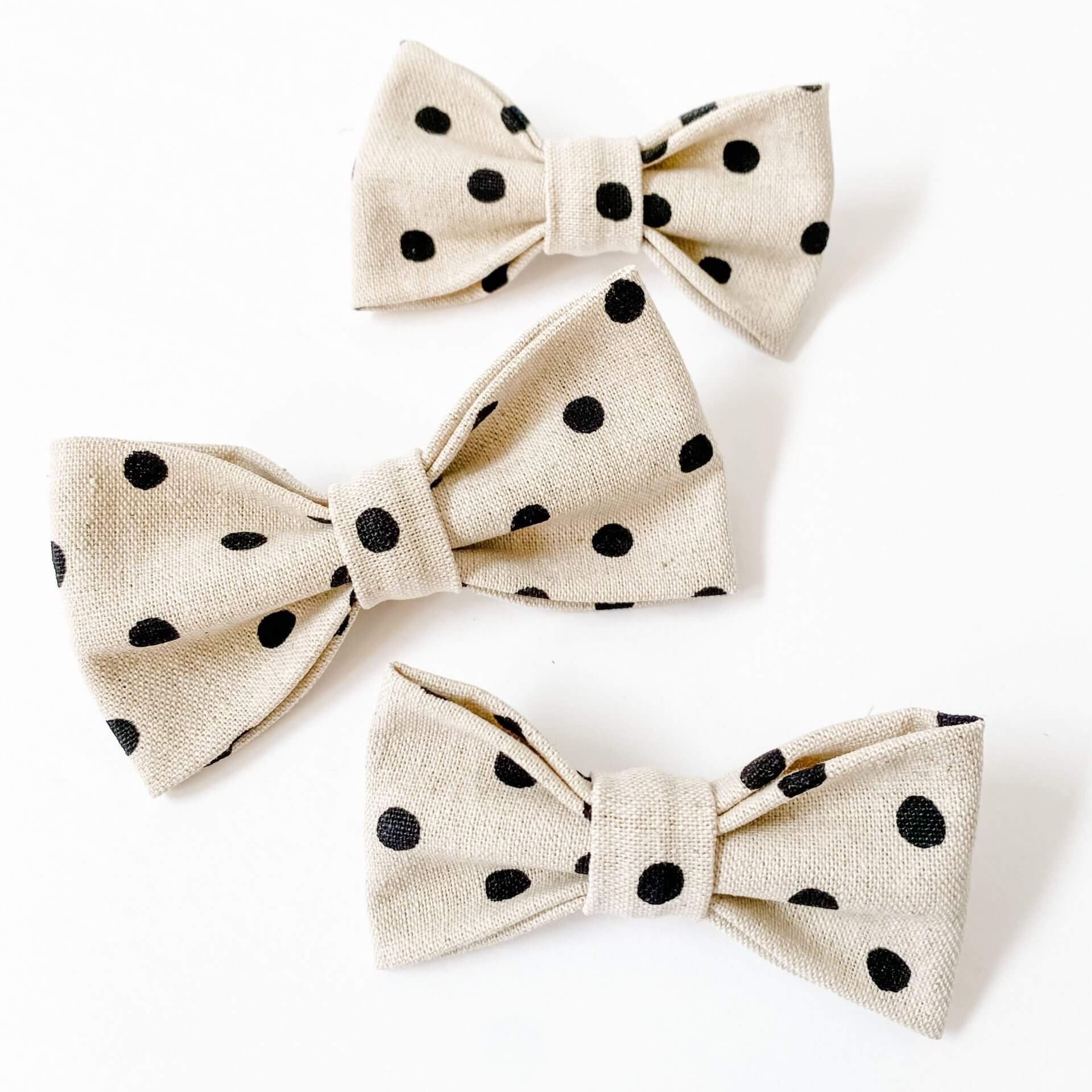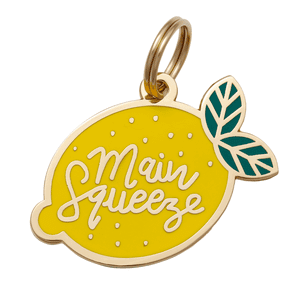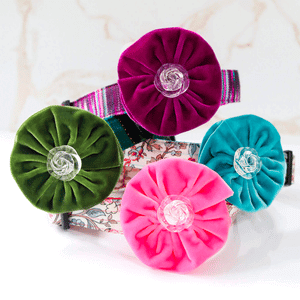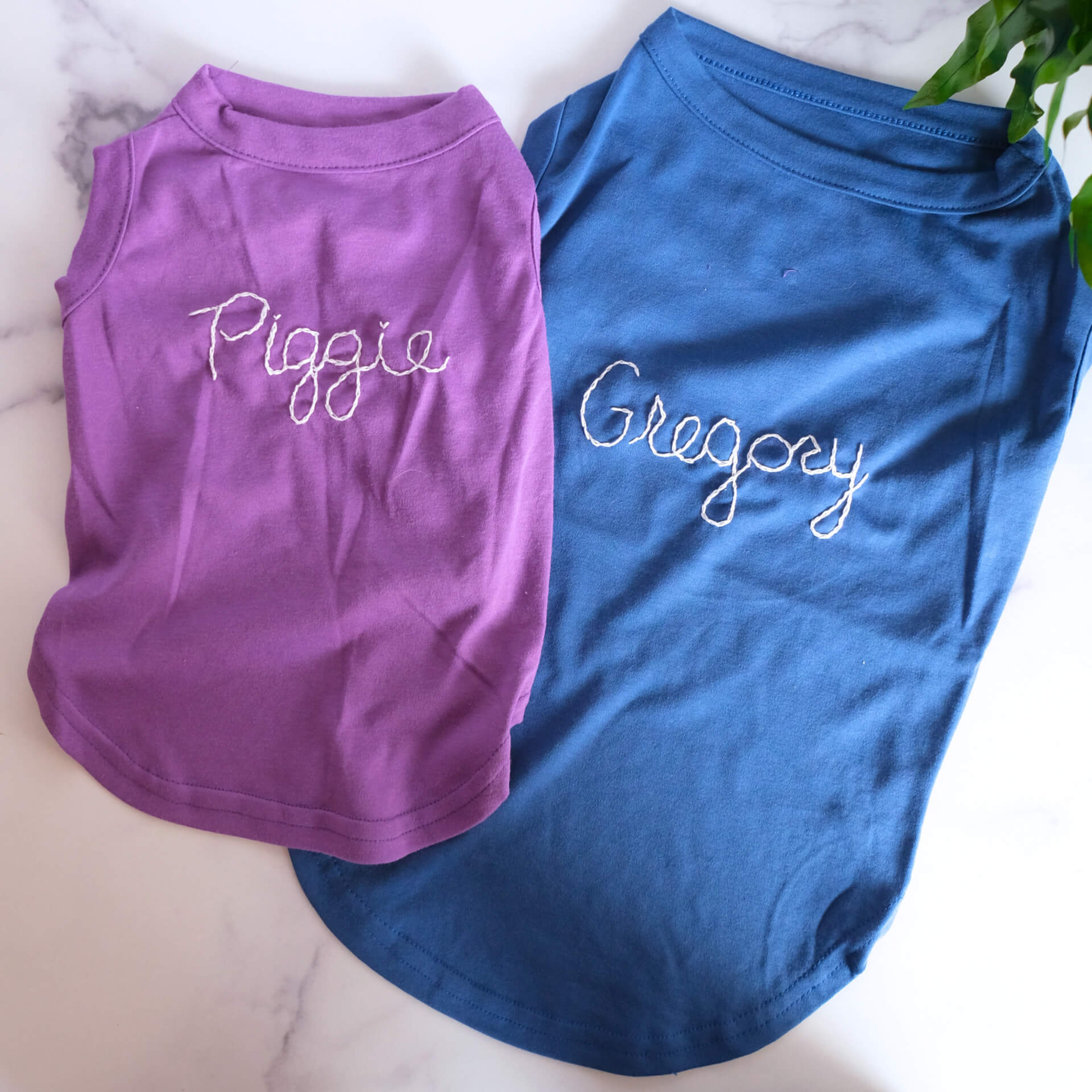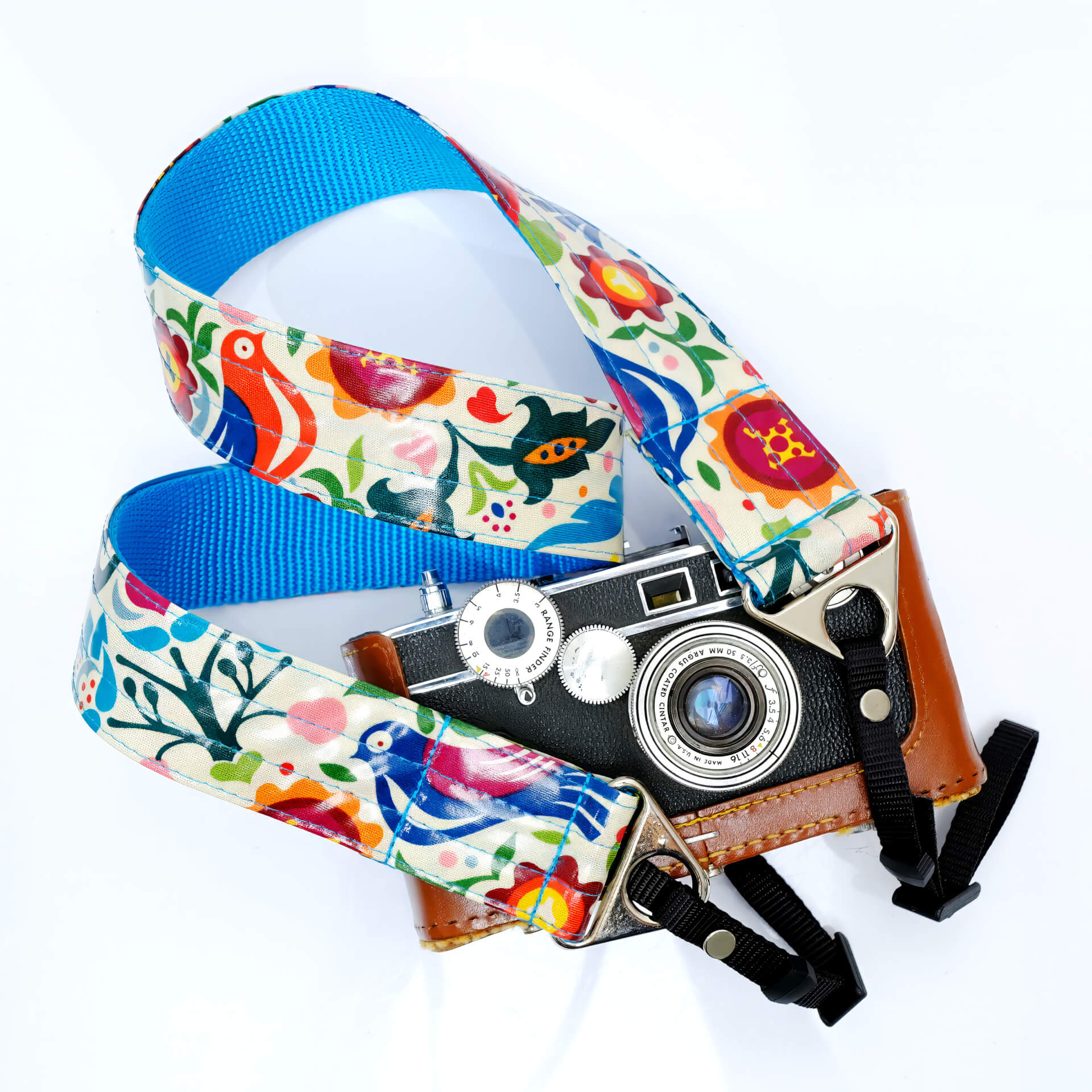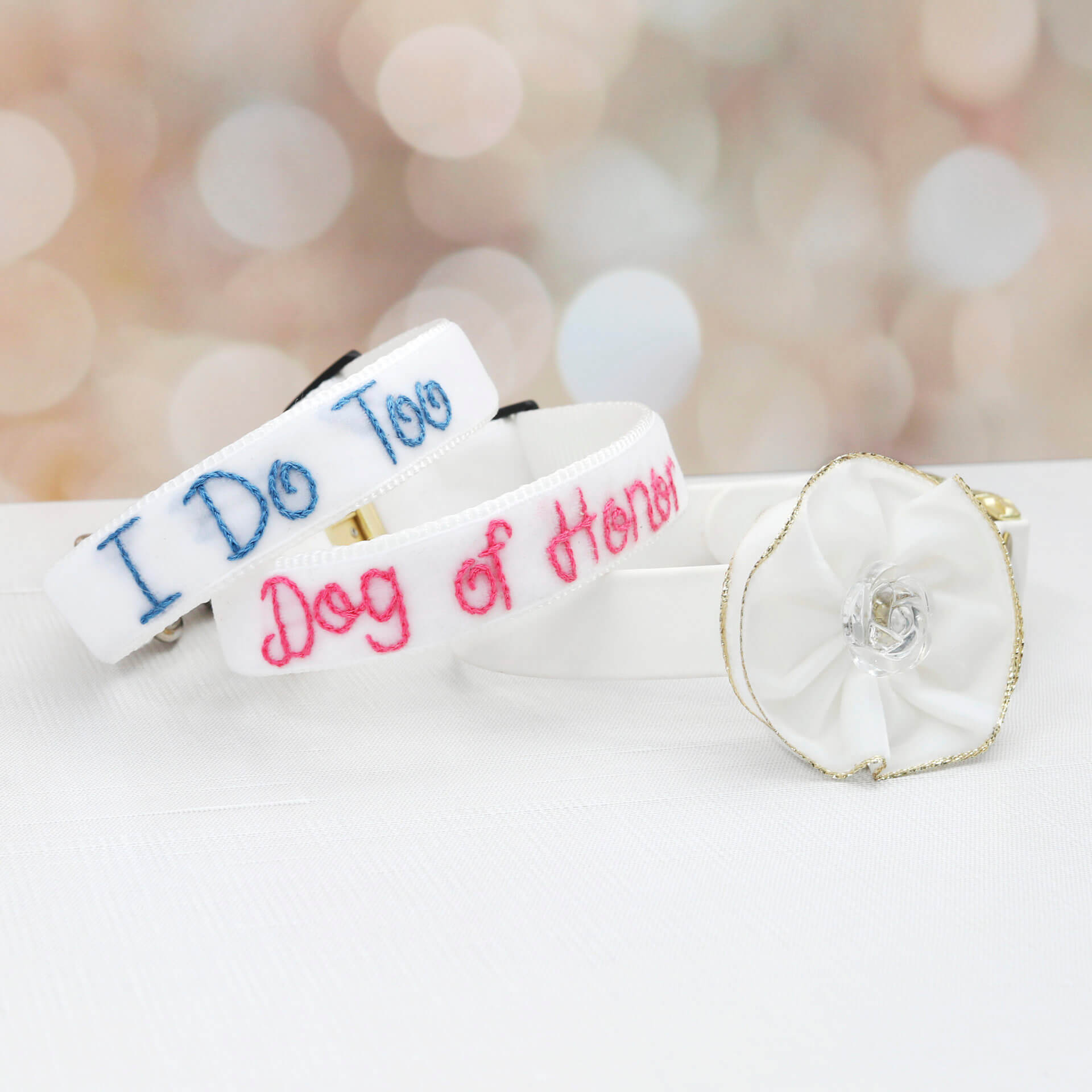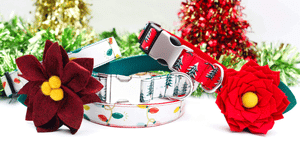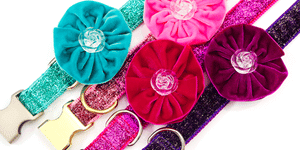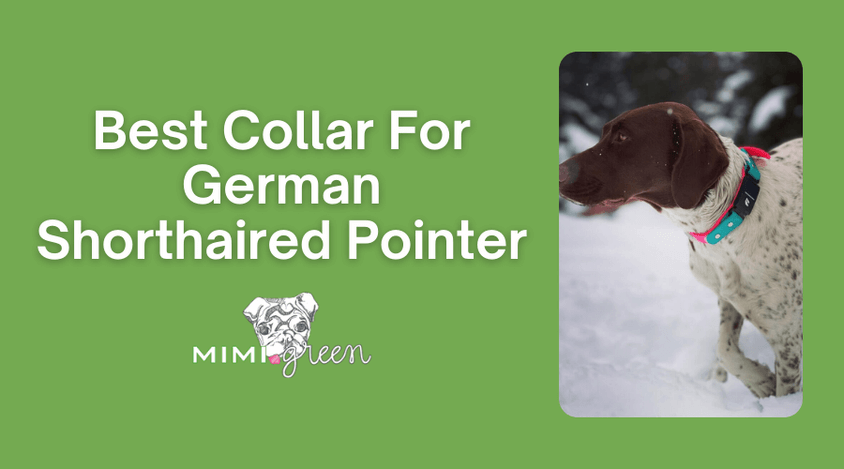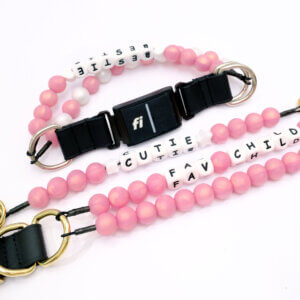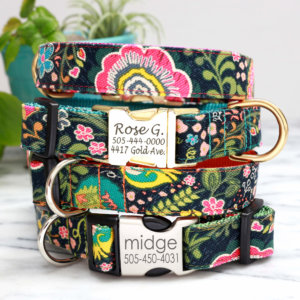Blog
Best Collar for German Shorthaired Pointer
The best collar for a German Shorthaired Pointer is a durable, secure everyday collar (nylon or waterproof Biothane®) fitted with a two-finger snugness, plus a martingale for training or fi compatible for escape-risk moments. Choose materials by lifestyle (water, field work, city) and add ID engraving for safety.
Quick Answers for GSP Dog Parents
- German Shorthaired Pointers (GSPs) grow fast, expect at least two collar sizes from puppyhood to adulthood.
- Durable collars are non-negotiable; flimsy or decorative-only collars won’t last with this athletic breed.
- Flat collars work for daily wear, but martingales add safety for pullers or escape risks.
- Materials matter: waterproof Biothane® for swimmers, leather for timeless style, nylon webbing for everyday comfort.
- Fit is everything, measure correctly and always use the two-finger snugness test.
GSPs aren’t your average couch-potato dogs. They’re hunters, runners, and full-time athletes.
A weak buckle or itchy fabric won’t cut it for a dog that spends hours charging through fields or swimming after ducks. That’s why size, material, and strength aren’t just “preferences”, they decide whether your dog is safe, comfortable, and secure on every adventure.
At Mimi Green, we hand-make collars in the USA with premium webbing, waterproof Biothane®, leather, velvet, and even glitter for the stylish pups. Every collar can be customized with engraved buckles, embroidery, or matching leashes.
If you want the full breakdown, collar types, sizing steps, breed-specific tips, and the real differences between options, keep reading, because that’s exactly what follows.
What Makes a GSP’s Best Collar Different?
High-drive, athletic GSPs need a secure, durable, low-maintenance collar with correct fit and quick ID. Materials should resist water, odor, and wear from activity; training add-ons should be used thoughtfully.
German Shorthaired Pointers are bred to work, not lounge.
Their lean build, boundless energy, and strong prey drive mean they test their collars every single day. Flimsy hardware or cheap nylon frays can’t keep up.
Unlike small breeds that can get away with lightweight collars, a GSP’s collar has to check three boxes: strength, fit, and safety.
- Strength: Webbing that withstands thousands of pounds of pulling force.
- Fit: A secure size that won’t slip off their narrow head during a lunge.
- Safety: Engraved ID, reflective details, or even GPS for off-leash adventures.
Mimi Green collars combine all three, each handmade in the USA with the option to engraved buckle so ID never slips off.
Step-by-Step: How to Choose the Right Collar for a GSP
Follow this simple path: pick type for use case, choose material for lifestyle, measure and size, add ID, then test fit on a walk.
- Pick the collar type – Flat for everyday wear, martingale for training or escape-prone pups.
- Choose material for lifestyle – Waterproof Biothane Collars for swimmers, strong nylon for daily wear, or leather for long-term style.
- Measure carefully – Use soft tape around the mid-neck and apply the two-finger snugness rule.
- Add secure ID – Opt for engraved buckles over dangling tags.
This step-by-step approach prevents wasted purchases and keeps your GSP safe whether they’re tearing through fields or snoozing after a run.
Collar Types for GSPs: Pros & Cons
Most GSPs thrive with a flat everyday collar; add a martingale for training or extra security. Specialized tools (head, prong, e-collar) are for experienced handlers with trainer guidance.
Flat/Everyday Collar
All-day wear and ID, choose sturdy webbing or leather with a secure engraved buckle.
Flat collars are simple, reliable, and perfect for daily use. They hold ID securely and come in endless patterns and fabrics at Mimi Green. Choose engraved buckles.
Martingale
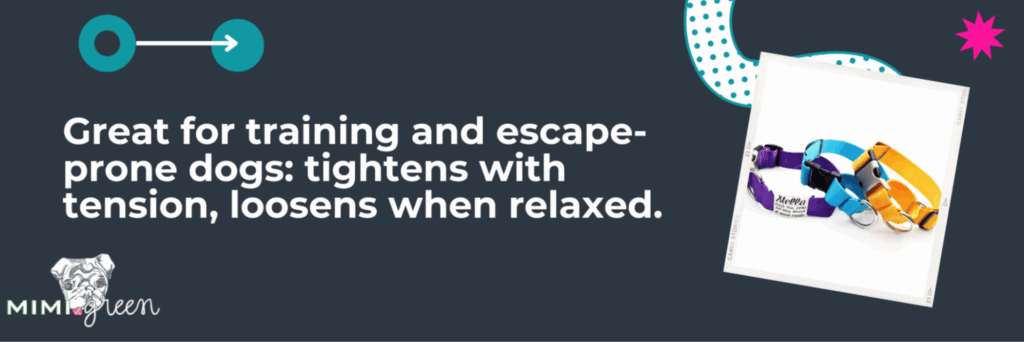
Ideal for narrow-headed breeds like GSPs, martingales prevent slipping out without choking. Ours are handmade to order, with optional engraving and embroidery.
Material Guide for GSPs
Match material to how your GSP lives: water dogs, field runners, or city strollers.
- Waterproof Biothane Collars – Best for swimmers, mud lovers, or rainy climates. Easy to wipe clean, odor-resistant, and flexible in cold weather.
- Nylon – Strong and washable, perfect for daily wear. Mimi Green’s webbing withstands 3,100+ pounds of pressure.
- Leather – Classic, long-lasting, and softens over time. Needs conditioning and is not ideal for water-heavy lifestyles.
- Velvet or Glitter Options – For style-conscious pet parents who want durability with flair. These are lined with sturdy nylon for comfort and function.
Buckles, Hardware & Safety
Choosing the right hardware is just as vital as material:
- Plastic vs. Metal: Many assume metal is stronger, but Mimi Green’s military-grade plastic buckles often outperform because they have fewer weak moving parts.
- Fi Compatible: For roaming adventurers, GPS compatible collars add peace of mind.
- Engraved buckle: Keep ID permanently attached without dangling tags that can snag or break off.
GSP Sizing & Fit (Exact Steps)
Measure at mid-neck where the collar sits; use your chosen collar’s size chart; confirm with two-finger snugness and a short walk test.
German Shorthaired Pointers grow quickly between 8 weeks and 6 months, so expect at least two collars in their lifetime. Puppies may start with 8–10″ collars, while adults range from 14–20″ depending on sex and build.
How to size correctly:
- Wrap a soft tape around the middle of your dog’s neck.
- Add the two-finger rule, you should be able to slip two fingers under the collar with light pressure.
- For martingales, check the loop gap: when pulled tight, the two rings should never touch.
- Test with a short walk, if the collar spins or slides over the head, it’s too loose.
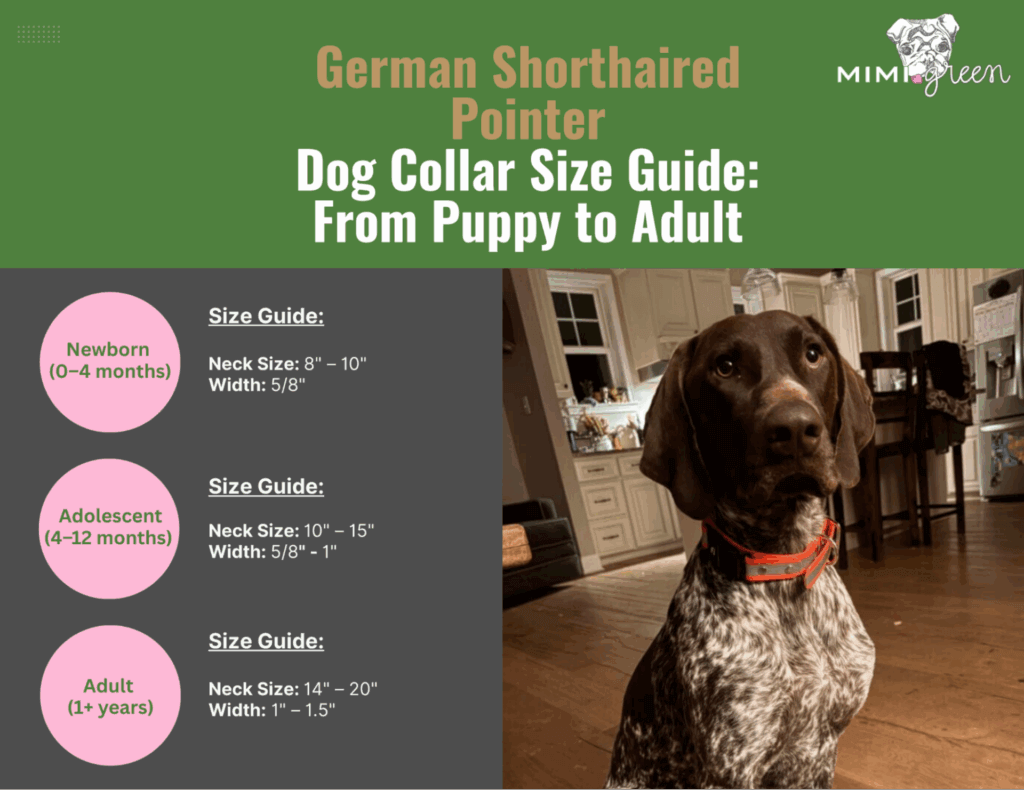
Collar vs. Harness for GSPs
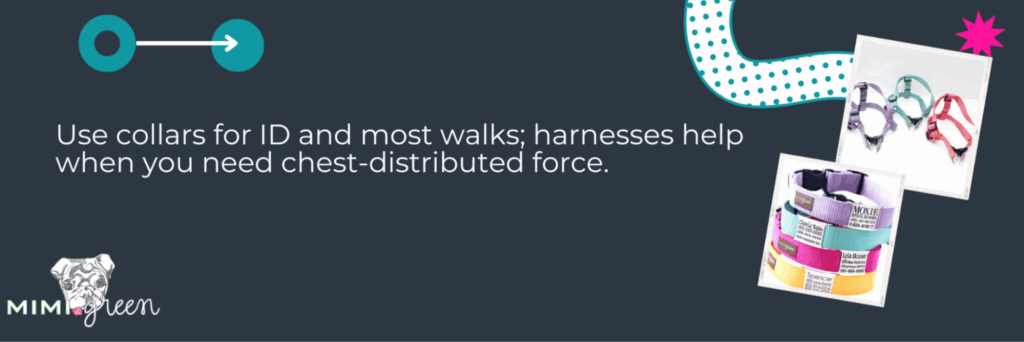
- Collars: Best for ID tags, everyday use, and leash attachment in well-trained dogs.
- Harnesses: Useful for dogs that pull or slip collars. Mimi Green’s Step-In and Easy-On harnesses are USA-made and customizable to match collars.
- Avoid misleading labels: Terms like “escape-proof” often don’t hold up, proper sizing and training matter more.
For most GSPs, a collar is the everyday standard, with a harness added for long hikes or high-pulling situations.
Real-World Scenarios (GSP Use Cases)
Pick by situation: field training, lakeside weekends, city walks, puppies vs. adults.
- Water Lovers: Waterproof Biothane Collars resist odor and bacteria, ideal for dogs that swim or play in mud.
- Field Dogs: Durable nylon with reflective stitching keeps them visible and secure in low light.
- City Strollers: Stylish velvet or patterned webbing for fashion-forward pups who still need strength.
- Puppies: Lightweight, adjustable flat collars that can be swapped as they grow.
- Escape Risks: Martingale or Fi Compatible collars provide added safety.
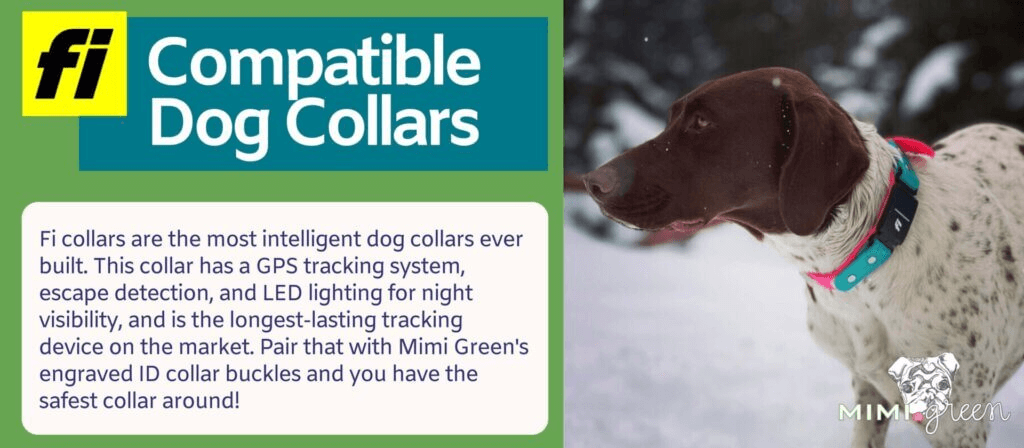
Addressing Worries from GSP Parents
- Slipping out: Martingales prevent escape from slim heads.
- Durability: Heavy-duty webbing withstands over 3,000 lbs of pull, cheap collars won’t.
- Choking fears: Proper fit avoids pressure; martingales tighten safely without choking.
- Buying multiple collars: Puppies do outgrow collars, but choosing adjustable designs extends their use.
- Style vs. function: At Mimi Green, glitter, velvet, or floral collars are built on strong nylon bases, fashion doesn’t mean fragile.
These worries are normal, but with the right fit and material, they disappear.
GSP Collar Checklist
A skimmable list to confirm before you buy.
- Correct type chosen
- Collar sized using two-finger snugness rule
- Engraved buckle
- Material matched to your dog’s lifestyle (water, city, field)
- Fi Compatible upgrade considered
- Matching leash selected for activity
This quick list ensures your choice balances safety, comfort, and style.
Why the Right Collar Matters Most
German Shorthaired Pointers are athletes, explorers, and escape artists rolled into one.
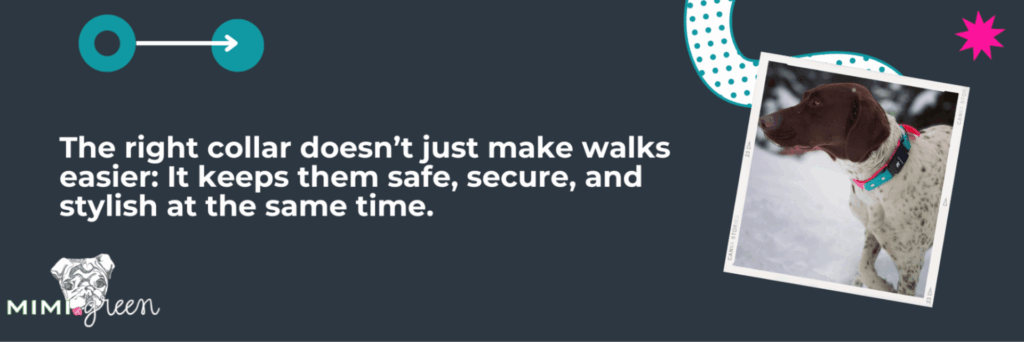
At Mimi Green, every collar is handmade to order in the USA. That means no mass production, no shortcuts, just gear built to match your dog’s life.
Whether you need a Waterproof Martingale Collar for the lake, a flat collar for city strolls, or a Fi Compatible option for GPS peace of mind, we can build it, personalized, engraved, and stitched just for your pup.
Your GSP deserves more than “good enough.” They deserve a collar that works as hard as they do.
👉If you’re ready to explore options made with care and creativity, browse our collars collection and design something as unique as your best friend.
People Also Ask: Quick Answers for GSP Owners
Should I use a martingale collar for my GSP? Yes, if your dog slips out of flat collars or pulls. Martingales tighten gently without choking when fitted properly.
Are harnesses better than collars for GSPs? Harnesses distribute pulling force, but collars are better for ID and daily wear. Many owners use both depending on the activity.
How strong should a GSP collar be? Strong enough to withstand 3,000+ lbs of pull force, cheap collars snap too easily for this athletic breed.
What’s the average neck size of a full-grown GSP? Most fall between 14–20 inches. Always re-measure after growth spurts or seasonal coat changes.
Can GSPs slip out of regular collars? Yes, slim heads make it possible. Martingales or properly fitted collars prevent escapes.
What collar material lasts longest for active breeds? Leather lasts longest with care, while Biothane® is best for waterproof durability.

